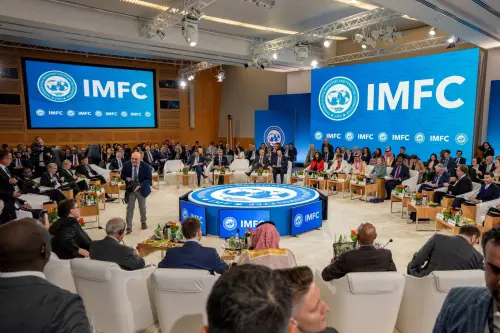

9:00 am EDT - 12:00 pm EDT
Past Event
The first meeting of the Innovative Financing Advisory Group on August 2, 2007, focused on two global health financing challenges at the development and delivery stages: 1) limited private financing in late-stage product research and development and 2) volatile and unpredictable financing for delivery of essential health services.
Topic 1: Leveraging private financing for late-stage product research and development
Summary of Presentation by KJ Singh, TITLE, The Bill & Melinda Gates Foundation
The Bill & Melinda Gates Foundation has made a $1.3 billion investment in 14 product development partnerships (PDP), which are not-for-profit entities that leverage research and development of products directed to disease burdens affecting the poor in developing countries.
PDP tend to be disease-specific; however, the Foundation uses a portfolio approach to diversify risks and maximize the probability that a successful candidate product will emerge from their investments. A successful product must meet customary thresholds for efficacy and effectiveness in developing country settings, but also affordability targets that are set based on major purchasers’ ability to pay.
While the initial investments in PDP are recognized as public goods and thus unlikely to be financed by private sources, some products may have a developed world market that implies profitability and thus the potential to attract private financing as products near late stage trials. PDP or their participating partners currently own the intellectual property rights to the compounds and products they develop, but, in general, have not yet defined standard practice with respect to the transfer of this IP during later stages of development.
Aeras Global TB Vaccine Foundation has a number of candidate vaccines nearing late stage clinical trials. Analysis suggests that there may be a market in both developed and developing countries via the replacement of existing technologies (BCG), a new norm to vaccinate front line health workers to protect against strains of drug-resistant TB as well as the extension of coverage. The total size of the developed country market is estimated at $300 million a year. A portfolio risk/reward analysis prepared by Lazard found that the vaccine portfolio’s NPV ranged from $1.2 to 3.7 billion; however, these estimates are very sensitive to assumptions regarding timeline, discount rates, pricing and competition.
To attract private investment, the Foundation is considering the creation of a new, investor-owned, for-profit holding company (“newco”) to be the custodian of the technology as it moves to Phase IIB trials. Investors would include technology owners, Aeras and private equity investors. Technology owners would have the option to buy-out other partners if so desired. Newco could be a virtual company managed by Aeras under a service contract.
The advisory group discussed whether private equity or venture capital could be attracted to such an opportunity and if this participation can complement the Foundation’s central goal of improving access for the poor in poor countries.
Topic 2: Reducing the volatility and unpredictability of aid financing for the delivery of health services
Summary of Presentation by Amanda Glassman, Global Health Fellow and Deputy Director, Global Health Initiative, Brookings Institution
The scope of the problem of aid financing for the delivery of health services was discussed. Aid financing is now a major component of funding for essential health products and their delivery in the poorest countries of the world; $9 billion in 2006. Yet health aid is volatile, and more volatile than public spending on health in developing countries. Health aid displays an average percentage deviation from trend of almost 20 percent over the past decade. The volatility of DAH [what does this stand for?] is double that of government spending on health and the volatility of aid does not offset the volatility of public health spending, but reinforces it. Further, DAH is pro-cyclical with donor country growth rates and domestic spending pro-cyclical with own growth; frequently it all moves together, producing troughs and peaks. Poor, aid-dependent countries are more prone to volatility and display higher input- and output-inefficiency.
The volatility and unpredictability of the new recurrent cost financing hampers the sustainable provision of new health services, raises costs, weakens incentives for companies to invest in researching new drugs and technologies for tropical diseases, and affects the motivation of current and future health professionals to work in developing countries. As donors and aid recipients contemplate ways to scale up access and service delivery, the importance of stable aid becomes more critical.
Since the causes of volatility are multiple and not all undesirable, solutions must be well-matched to problems. Two options were presented for reducing volatility and unpredictability related to choppy flows attributable to administrative and performance-related failures on the donor-side and one option for dealing with volatility related to external shocks (recession or disease): (i) securitization of aid receivables; (ii) country-level endowment funds; and (iii) health catastrophe insurance.
The advisory group discussed whether these options are likely candidates for involvement of commercial financing, what types of information would be required in order to further develop the options, and if there are other more attractive opportunities that have been missed.
View more information about the Innovative Financing Advisory Group

Robin Brooks
April 25, 2024

Janice C. Eberly, Andrew J. Fieldhouse, David Munro, Louise Sheiner, Jón Steinsson
April 25, 2024
2024
The Brookings Institution, Washington DC
10:00 am - 11:15 am EDT